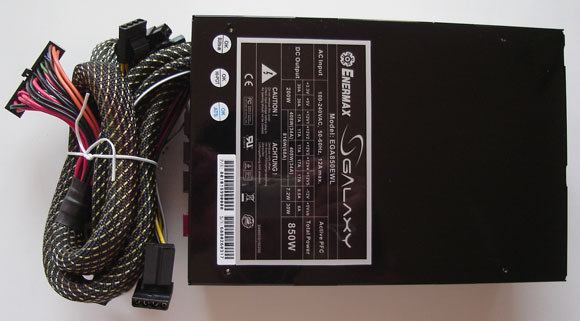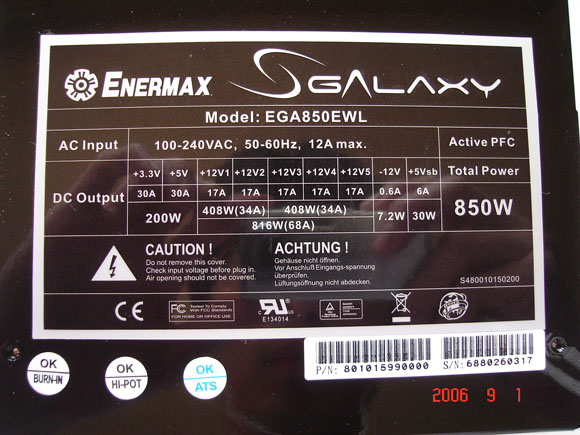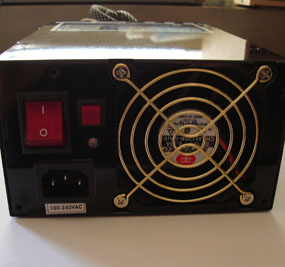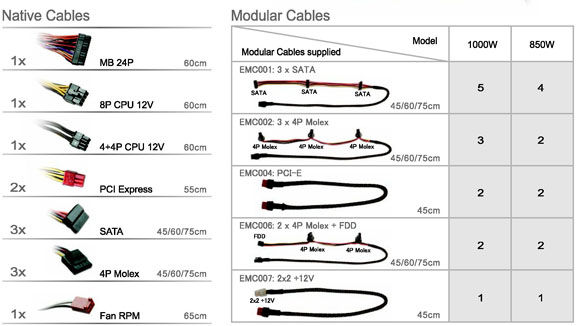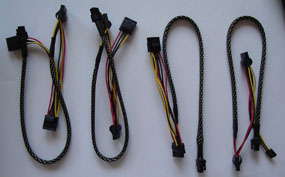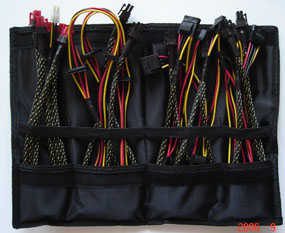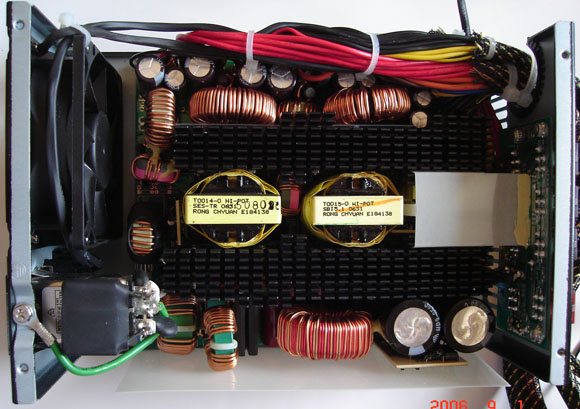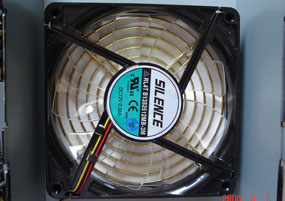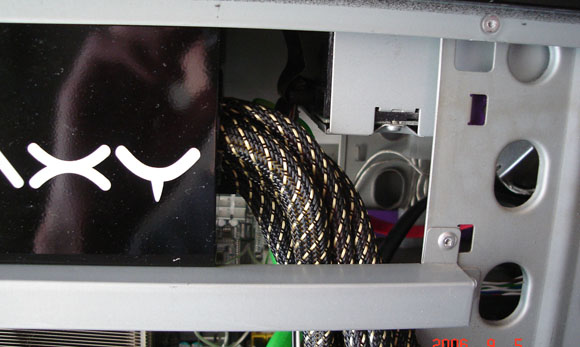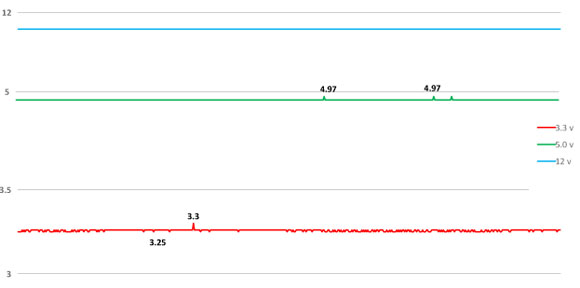Enermax Galaxy 850W EGA850EWL is a must have PSU for those who plan to build the best gaming system that packed with high-end components. It is packed with five 12V and will support Quad Core & Quad CPU system as well as Quad graphics systems and up to 24 HDDs. Not only that, it has packed with many features that will not only satisfy any system configuration but also more, read our review to see what is packed in this monster and how it performs.
Introduction
The power supply is often the most important component in a computer, yet often it’s the most overlooked component. Often people will spend a whole lot of money on the graphic card, motherboard, processor, and memory, but they forget that power supply is the heart that’s pumping the needed power to get everything up and running. If the power supply fails, then the whole system will not work (not to mention that a poor power supply can also damage the internal components). With computer processors moving into dual core, multi-processors, multi-GPUs (2 high end cards using SLI or cross-fire, even 4 cards via quad SLI), and multiple hard drives, the demand for a good quality power supply is not just reserved for enthusiasts anymore. Today, we are going to take a look at one of the best power supply unit’s that is currently available—Enermax Galaxy 850W EGA850EWL (probably the only other PSU that’s better than this PSU is the Enermax Galaxy 1000W model).
Many power supply companies have been offering high-end power supply that can deliver tremendous amount of wattage all the way up to 1kWs (we had a review on the PC Power & Cooling). What sets this power supply aparts from the others? Well, Enermax claims that their power supply is the first in the industry that has “five 12V rails (while others in the industry only has 4), which are an integral part of the upcoming revision of EPS12V PSU design guided by Intel”. Not only that it has 5 rails, they are versatile enough to power “Quad Core & Quad CPU system as well as Quad graphics systems” (Triple Quad as Enermax calls it) simultaneously. In addition, Enermax emphasizes that this power supply is fully rated at 50°C. Since power supply loses its delivery capacity as the operating temperature increased, by testing the power supply at 50°C, Enermax guarantees that the PSU will deliver the rated wattage at 50C, which is the temperature at which most computers operate at or below. Okay, enough of what Enermax says, let’s see what is packed in this baby.
Features
- 850 WATTs
CONTINUOUS POWER for ULTRA SYSTEMS. - 816 WATTs
12V COMBINED POWER for ULTRA CPU’s and GRAPHICS. - 24/7 @ 50°C
NON-STOP FULL POWER @ 50°C by design and components. - 2007 EPS12V SSI COMPLIANT
WORLD’s FIRST PSU compliant with upcoming 2007 EPS12V SSI design guide revision. - WORLD’s FIRST FIVE 12V rails
2007 EPS12V SSI specification for next-generation systems. - WORLD’s STRONGEST +5Vsb output of 6A
2007 EPS12V SSI specification for next-generation systems and multiple USB devices. - TRIPLE QUAD + 24
QUAD CPU,
QUAD CORE,QUAD GRAPHICS,
24DRIVES.
SIMULTANEOUS! - 80-85% EFFICIENCY
@ 20-100% load for the SMALLEST electricity BILLS - MODULAR connectors
MAXIMUM SATA or IDE/SCSI drives (21+3 of free choice). - SILENT & COOL
by 13.5 & 8cm dual fans. - POWER GUARD
4 ALERT MODES on PSU STATUS with RESET button. - TRIPLE TRANSFORMER TECHNOLOGY
the UTMOST in STABILITY & POWER. - DUAL TIER MINIMUM LOAD design
OUTSTANDING COMPATIBILITY with upcoming multi-core processors. - DUAL TIER COMBINED POWER
TOTAL SEPARATION of CPU(s) from the rest of your SYSTEM for maximum stability. - RAM POWER CABLE
WORLD’s FIRST PSU with a dedicated RAM power cable to support next-generation 32-64GB RAM systems. - ACTIVE PFC & UNIVERSAL AC IN
run your GALAXY from 90-264VAC with automatic adjustment and active power factor correction.
Exterior View and Features
The retail box for the power supply clearly shows off all the features for the Enermax Galaxy EGA850EWL. In addition to the aforementioned compliance with 2007 EPS12V SSI and five 12V rails, 0-50C full power, this PSU can deliver 80-85% efficiency (as oppose to many other PSUs that only delivers 70% or less). The high efficiency will greatly reduces the power consumption, which translates into lower electrical bills. In addition, it also supports active PFC and universal AC in, which you can just run your GALAXY from 90-264VAC with automatic adjustment and active power factor correction.
Open up the box, you will see two big rectangular brown boxes, one is the PSU and the other is the accessories. The PSU is wrapped in a plastic bubble bag. The cables are nicely tied up. The first thing you will notice about the PSU is the size and weight.
This power supply is much bigger than most standard ATX PSU, it measures 150 (width) x 86 (height) x 200 (depth) mm and weighs 3.55 kg (or 7.83 lbs) without the modular cables. The depth of the PSU may pose some problem for people who have case that is not as deep or have a larger 5 ¼” peripherals. The outside of the PSU is coated with nice shinny finish like the outside of the piano.
On the outside of the PSU, the detailed amperage for each rail is printed. The PSU delivers maximum 30A on +3.3V, 30A on the +5V, and each of the five +12V can output up to 17A individually. Also, notice that the PSU can outpout 6A on the +5Vsb (the standby power), which Enermax claims it is the industry first to have 6A on the +5Vsb rail..
The five 12V rails are actually bundled into two groups: one group contains two 12V rails that powers the CPU specifically (the 8pin and 4+4pin molex that labeled “CPU only”). The other three 12V rails are bundled together to power up other components, such as graphic cards, HDDs, and other components and you can see how it is being distributed among the five rails on the table above. The combined 12V can output 816W.
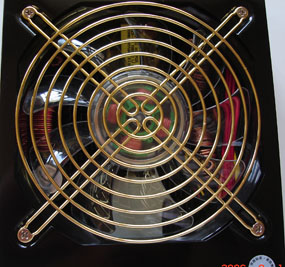
The PSU comes with 2 fans, a 13.5 cm fan on the bottom and a 8cm exhaust fan on the back, to keep it running cool. The fans are covered by fan grills. The 8cm exhaust fan on the back of the PSU is temperature controlled. In addition, you see the normal on/off switch and the power connector. Notice that the PSU lacks of the voltage selector as the PSU comes with active PFC, which automatically select the voltage. In addition, you will see an LED light indicator and a red button.
The LED is a signaling function called PowerGuard that Enermax has implemented on the PSU. The PowerGuard uses the LED lights and the internal buzzer to indicate the PSU’s status. The combination of different LED lights and the buzzer’s beeps indicate status of the PSU such as: standby, off, on, or suddenly off. In addition, it will shuts the PC off under certain abnormal situation. The red button is the reset button which allows you to reset the function and temporarily deactivate the internal buzzer.
Native Cables and Modular Cables
Looking at the cables, you will notice that Enermax Galaxy EGA850EWL has the combination of both native cables and modular connectors. This allows user to add more connectors when needed and keeps the case clean from cable clutters. Notice that the two 6 pins red color connectors on the PSU is for PCIe (or for RAM Power) and the other six 5 pins black connectors is for other HDD/peripherals.
These are the native cables that are already bundled in the PSU: one 24-pin ATX12V v2.x motherboard power connector, one EPS12V connector, two ATX12V connectors that can be joined to make a second EPS12V connector, two PCI Express power connectors, one cable with three peripheral connectors (4 pin molex), one cable with three SATA connectors, and one fan connector that monitors the 8cm fan RPM.
The cables are very long (the length is given on the image above). They are sleeved but some of the cables are half-sleeved. It is unfortunate that Enermax didn’t sleeve the lower parts of the multiple connectors. All connectors comes with feature to allow easy plug in and out of the connectors.
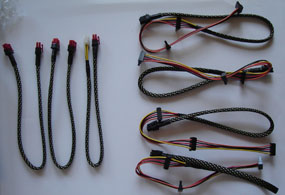
As mentioned above, this power supply comes with both native and modular connectors. The modular connectors that are included are as follows: two PCI Express power connectors, two cables with three peripheral connectors (4-pin molex), four cables with three SATA connectors, and two cables with two peripheral connectors (4-pin molex) and one FDD connector, and one 2×2 +12V cable that is designed for heavy-duty Quad CPU system with full RAM module configuration (32/64GB). The 2×2 +12V plugs into the red connector and it basically supplies additional power to the RAM.
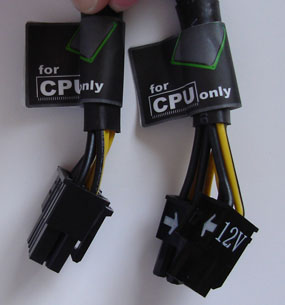
All together, this PSU can supports up to Quad CPU, Quad GPU, 15 SATA HDDs, 13 peripherals (4-pin molex), and two FDDs (though there are only 6 modular connectors, so you couldn’t use all the cables and it ends up to support maximum of 24 HDDs). According to the manual, Enermax sells other optional cables. It would be hard to think that you ever need other cables as what’s included is probably more than enough and it has everything that’s needed, but if you do need additional connector, check out Enermax’s site.
Accessories and Internal View

To assist storage of these extra cables, Enermax has included a plastic pouch so that all the unused cables can be stored in a safe place. In addition, a manual is included, along with: a power cable, four screws, some plastic covers to cover up unused modular connector on the PSU, and a lanyard.
Opening up the PSU (which will void your warranty), the first thing that you will notice is the 2 transformers used to deliver the main 12V power. Many PSUs on the market use just 1 transformer to deliver the 12V but EGA850EWL uses two. Enermax has dedicated 1 of them specifically to power the CPU only (which are the two CPU only rails mentioned above). The other transformer is used to power other components. Also, you can see two rows of black heatsinks to help dissipate the heat.
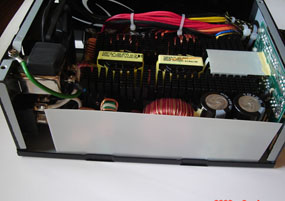
Also notice that on the either side of the PSU, there is a plastic cover that is used to help protecting the PCB. You can also see the 13.5cm fan is just a plain case fan that is mounted to the bottom of the PSU. It can be easily replaced.
One thing to make a note about this power supply: It will only work with motherboards with native 24 pins power connector. Since the main connector is not separable like other PSUs to give 20+4 pins and no adapter is provided to convert the 24 pins into 20 pins. This probably is not going to pose any trouble for most users as 24 pins is the standard but if you have a motherboard that still has the 20 pins, you would need an adapter.
Installation and Testing
Installing the PSU is extremely easy: disconnect the cables from the old PSU, remove it, put the new PSU in and connect all the cables. The size of EGA850EWL may posess some problem for people who have a small case. I had to push my DVD drive out a little before I can put the PSU into my Antec Sonata case. The Sonata is not a server case or a big desktop case, but the PSU fits in the case just fine. I only have a slight clearance on the back of the DVD drive from the PSU.
The PSU is very quiet. I am a bit surprised to see hear how quiet it is. I barely hear the fan noise coming from the PSU. The included 13.5cm and temperature controlled 8cm fans really keep the system running quiet. One thing I did notice is that the top of the case where the PSU extends over do gets slightly hotter.
I do have couple of complains about the PSU. One of them is location of the native cables. I would rather prefer Enermax puts the cables on the right side of the PSU than on the left side. Most cases are opened from the left side, by having the cables on the left side, it makes it hard to connect the modular connector to the PSU as the bundle will get in the way. Another complain that I have is the lack of native floppy connector (although Enermax has included two floppy connector with the modular cables). Sure, the floppy drive is almost dead (it’s been hanging around longer than most other PC peripherals and it doesn’t seem to be vanishing fast enough), but it would still nice to have at least 1 native floppy connector since many of us still have a floppy drive that we may only use once in awhile. As it turns out, I need both of the modular floppy connectors: one for my DFI motherboard which requires the floppy connector connected to the motherboard and the other for the floppy drives.
Test System
Okay, let’s get to the fun part of the review – test out how it performs. I install the PSU into my system with the following specifications:
| Processor |
AMD Athlon 64 X2 4200+ Manchester (overclocked to 2365 MHz) |
| HSF | Thermalright XP-90 with Blue Enermax 92mm Fan w/ Speed Control(UC-9FAB-B) |
| Motherboard | DFI Lanparty nF4 SLI-DR (BIOS 0406) |
| Memory | 2x G.Skill Extreme Series (F1-3200PHU2-2GBZX) |
| Graphics Card |
Gigabyte GeForce 7800 GT (GV-NX78T256V-B) (Forceware 91.47) |
| Sound Card | SoundBlaster Audigy 2 |
| Hard Drives |
Internal
External:
|
| Periphearls |
1 NEC 3520A DVDRW 1 floppy drive |
| PCI Cards | Compro VideoMate TV Gold+ |
| Monitor | Dell 1905FP |
| Power Supply | Enermax Galaxy 850W EGA850EWL |
| Others | 2 case fans |
Since my system setup was not overly fancy with SLI and top of the line processor, I decided to let the test the power supply with slightly overclocked processor. Three measurements were taken, and all the readings were done with a Craftsman Digital Multimeter 82082. First the boot-up reading. I let the system boot into BIOS and read the voltages. The second reading was the idle voltage, which I let the system boot into Windows and let the system stand for 30 minutes without any program running (except the common background applications). The third reading was the load, which I run 3dmarks06 in a loop of 10 cycles and Orthos Stress Prime 2004. I took a reading every 10 minutes and average them. Since the PSU comes with 2 transformers, one for the CPU only +12V and the other +12V for the peripherals, I read both the CPU only +12V and the other peripheral +12V.

As you can see all three voltage are putting slightly more above the standard (~2% higher). Moreover, you can see that the voltage are very stable under the load. I did notice that the 5V seems to jump around 5.01V to 5.12V during idle or when the system is not doing power demanding tasks but during load, it stabilized in 5.11V~5.12V range all the time. The 3.3V and 12V rails are very consistant both under the idle and load condition. Also, notice that the CPU only rail outputs slightly higher voltage than the peripheral 12V rail.
I also did an extensive reading on the PSU using Everest to record the PSU’s voltages every 5 seconds for a period of several days whenever the system is turned on. We all know that voltage readings by the software program can be fairly inaccurate. However, the goal of this measurement is not checking the accuracy of the voltages, rather, I am interested in seeing how the PSU’s stability and fluctuation of the voltages during normal usage. I run extensive tasks, such doing the benchmarks, running Oblivion, to simple tasks such as typing, browsing webs to scanning for virus. Again, the whole idea of this test is to see how this PSU really performs in real life and how the voltages fluctuates.
The normal is the idle reading from the Everest when the system is running just the background programs for an extensive period of time. The readings are collected from several days of usage and the maximum and minimum readings are reported. As you can see the 12V rail is rock solid, it hardly fluctuated at all, just dip a little to 11.84V. The 3.3V didn’t change that much either, just fluctuated a little between two readings. The 5V seems to fluctuates. However, just like the multimeter’s reading, the values are extremely stable when the system is under load and the fluctuation is usually observed when the system is not running any intensive tasks. The bottoms image shows the reading of the three voltages under load. As you can see the stabilities of the rails. Once again, the software reading may not be the most accurate in assessing these voltages, but it gives you an idea that the voltages do stay quite constant and hardly deviate from the standard.
Conclusion
Enermax is a very well-known PSU maker in the computer industry. Their new Galaxy 850W EGA850EWL maintains the standard that Enermax has been known for – rock solid performance. Furthermore, it has taken the computer power supply into the next level. Everything about this PSU, all the way from the polished exterior finish, the modular and native connector, PowerGuard, to the inside components – dual transformer and five 12V rails, are features that makes EGA850EWL the PSU to buy. The true 850W at 50C and independent CPU only 12V rails will guarantee that even under extreme usage, the PSU will deliver a steady power to any power demanding system configuration. In addition to all the hardware features, Enermax also supports the PSU for 3 years (although it would be nice if Enermax can follow other big manufactures’ trend by extending the high-end PSU to 5 years). There is just one little thing that people who who are looking to purchase this PSU should watch out – make sure that their case is deep enough to fit the PSU.
Enermax Galaxy EGA850EWL is clearly designed for the computer enthusiasts. Even at 850W, Enermax is not skipping any details. It has all the features that its big brother, 1kW PSU, has. With the MSRP of $279 and currently available at various online retail stores with price ranging from $284.99 (ZipZoomfly) to $319.99 (Newegg), the price of this power supply may seem quite steep for many people. However, if you are considering running multiple CPUs, Quad SLI, and multiple HDDs, having a very strong PSU that delivers steady power is a must and the price seems to be justified. It’s really nice to see that Enermax does not just make a PSU that supports today’s high-end system, rather, it has taking the PSU into the next level and has enough connectors and power to support next generation of hardwares (ie. Quad cores and RAM Power). This is probably the most feature riched and forward looking ower supply that I have encoutered up to this point. Until a better one comes alone, this will be the standard that all other PSU will be measured against.
For all the great features, Enermax Galaxy EGA850EWL will recieve a 9 out of 10 score (extremely good) and won our coveted Golden Bear Award.
Pros:
+ Dual independent 12V transformer
+ Independent CPU only 12V rail
+ Five 12V
+ 850W at 50°C
+ Triple Quad: Supports Quad CPUs, Quad SLI, and Quad Core
+ Modular and Native cables
+ PowerGuard feature: LED, buzzer PSU status indicator
+ Large quiet 13.5cm and 8cm fans
+ Extremely Quiet and excellent performance
+ 85% efficiency
Cons:
– Not too easy on the wallet
– Some cables are not fully sleeved
– Much larger than normal ATX PSU which may cause problem on some smaller cases
– Cable is bundled to the left side (it would be better if they are on the right side for easy access to the modular)
– No floppy connector on the native cables
– A somewhat short warranty, 3 years
 Bjorn3D.com Bjorn3d.com – Satisfying Your Daily Tech Cravings Since 1996
Bjorn3D.com Bjorn3d.com – Satisfying Your Daily Tech Cravings Since 1996


